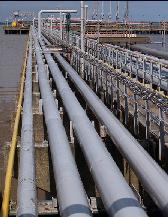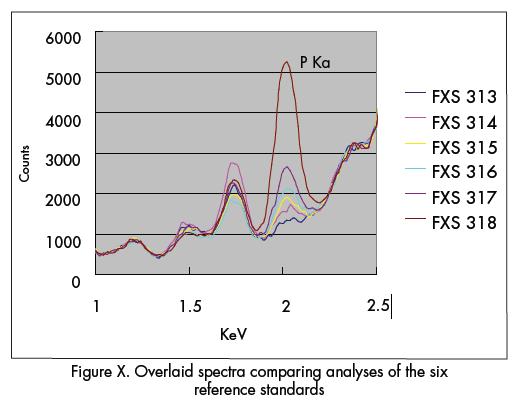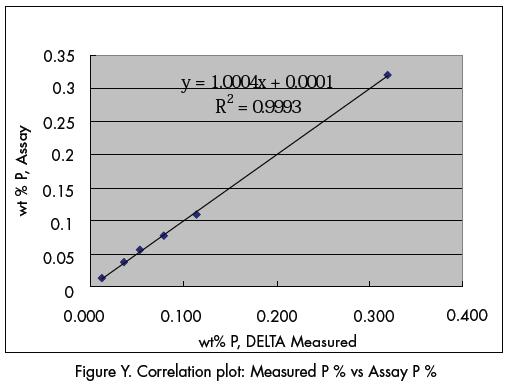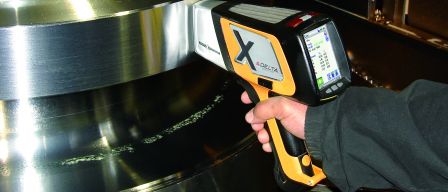Think you have the fastest and most reliable HHXRF? Think again. The DELTA Takes Phosphorus (P) in Steel Detection Limits to an All Time Low! The right amount of P content can increase yield and tensile strength of low carbon steel improving its processing, matching and corrosion resistance characteristics. However, too much P can cause brittleness which reduces the steel's strength and ductility, and ultimately its value. Ultra-low carbon steels and line pipe steels are among the most demanding for low P content - less than 0.01%. Hence, highly accurate measurements of low levels of P in ferrous alloys are critical for predicting quality for end use and ultimately the selling point of the piping and components. The DELTA Premium, the latest Olympus development in HHXRF goes to an all time high in accuracy and an all time low in detection limits for P in steel. It detects trace levels of P as low as 0.014% in carbon steel without vacuum or helium purge attachments. |
|
| Accurate Low Limits of Detection of Phosphorus (P) is Critical for Line Pipe Steels | ||
| Standard | wt % P, Assay | wt % P, DELTA Measured |
| FXS313 | 0.014 | 0.012 |
| FXS314 | 0.037 | 0.036 |
| FXS315 | 0.056 | 0.053 |
| FXS316 | 0.077 | 0.079 |
| FXS317 | 0.109 | 0.114 |
| FXS318 | 0.321 | 0.319 |
| Table X. Analysis results of six certified reference standards with varying P content
HHXRF Measurements taken with DELTA Premium for 5 sec Beam 1; 120 sec Beam 2 | ||
The DELTA Premium detects P in Steel with a correlation coefficient (R2) of 0.9993 in the range or 0.014 to 0.321!
In addition to testing for P in steel, the scrap processing recycling industry depends on HHXRF analyzers for metal sorting, buying and selling. Managers cannot afford to depend on out-of-date and unreliable equipment, or untimely support of equipment. They also cannot afford to fall behind the technology curve. The analytical capabilities of HHXRF continue expanding, and new features continually continually enable operators to be more effective and efficient. Upgrade your HHXRF to the DELTA - the latest HHXRF loaded with innovative features and backed by the industry's best service and support.
Handheld XRF for Metals & Alloys Industries
| Iron & Steel | Non-ferrous | Scrap & Secondary |
Iron and steel are the most widely used of metals and alloys. Lighter metals, non-ferrous, newly developed and exotic alloys are also utilized extensively, but iron and steel are considered the basic raw materials for the majority of industrial goods and construction. Although produced from ores mined around the globe, steel is one of the most recycled materials in the world. From base form to recycled materials to finished products, metals and alloys are integral to the fabric of society, the consumption of which is often considered a primary indicator of development and economic progress. | ||
Metals Alloys is a serious, dynamic business.The DELTA XRF analyzer is an essential tool for all businesses involved in the trade or use of metals alloys. In seconds, you can nondestructively measure 25+ elements. Turnings, shavings, rods, wires, small parts, components, sizeable materials and large structures can all be analyzed directly, non-destructively. How you get them, how you make them, how you use them, how you sell them is how you measure them. Whether you check purity, chemistry, or grade ID for highest value, maximum recovery, quality, conformance, or maintenance and safety, our DELTA XRF analyzer will give you immediate answers to take action on now. | 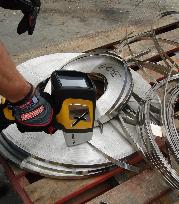 |
